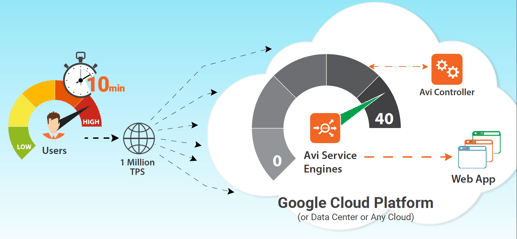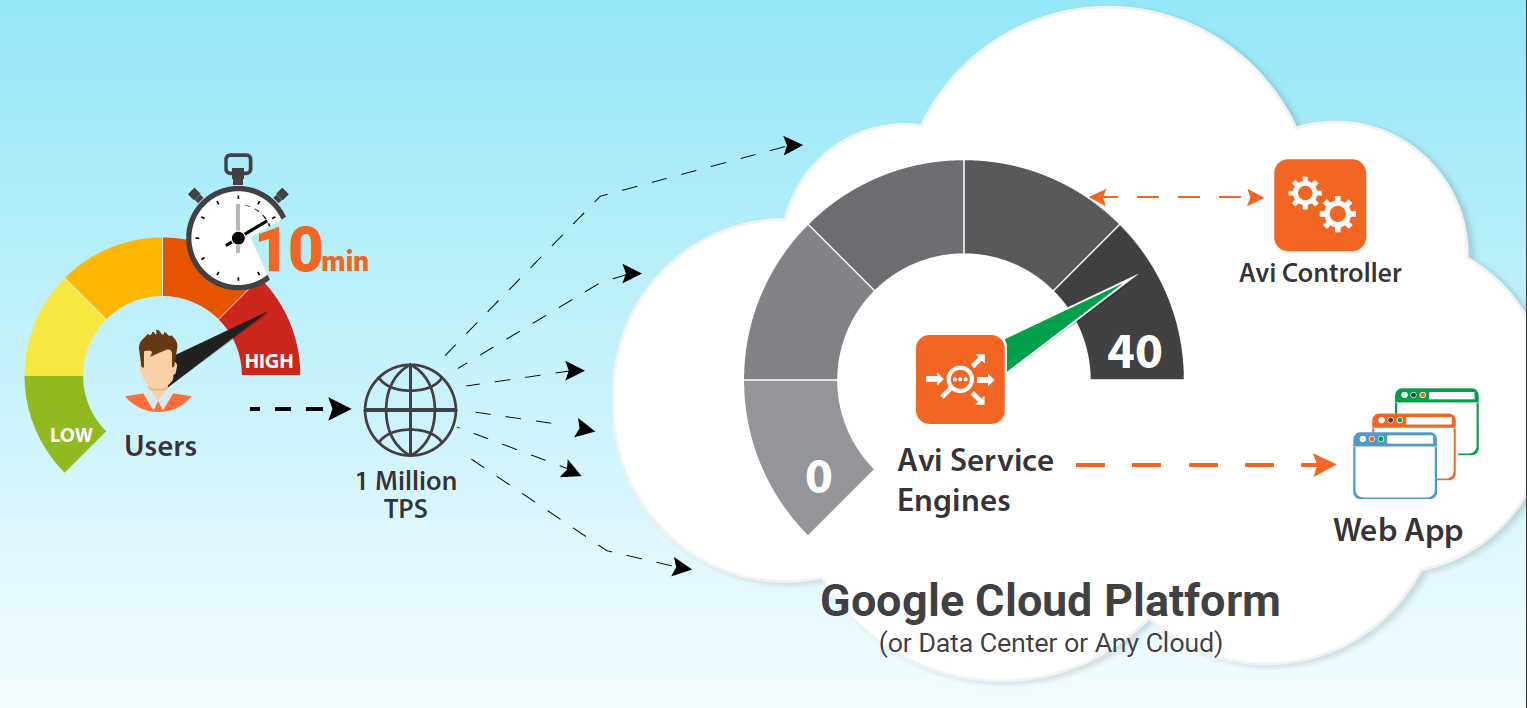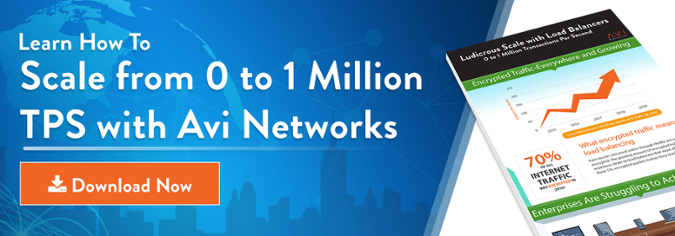Your application owners expect network and performance issues to be quickly resolved so they can deliver their apps faster. Your networking team expects this perfectly elastic load balancer that can scale itself automatically to meet application traffic patterns. Your CIO wants to accomplish all of this, while lowering costs.
So, what happens when things do not go as intended? Teams will start the infamous finger-pointing.
In today’s enterprise, load balancers have to be elastic and enable network and app teams to get their job done faster. On one hand, traditional appliance-based load balancers cannot deliver on the promise of true elasticity. On the other hand, open source solutions allow developers and app owners to get started quickly, but lack enterprise-class security and scalability features.
Avi Vantage: Elastic Application Services Fabric
Often, the biggest challenge for enterprises is in finding a single solution that delivers application services that go beyond load balancing, such as application analytics, predictive autoscaling, micro-segmentation, and security.
Modern data centers, esp. those adopting software-defined solutions and modern application architectures will benefit from the elastic application services fabric delivered by Avi Networks. The Avi Vantage Platform delivers:
- comprehensive capabilities such as load balancing, app analytics, micro-segmentation, security, and autoscaling
- consistent capabilities and admin experience across on-prem and multiple public cloud infrastructures
- elastic load balancing that can scale load balancing and application resources to match application traffic patterns
Built on software-defined principles, Avi Vantage separates data plane and control plane to deploy load balancers (Avi Service Engines) across multiple clouds closest to the applications and a central controller (Avi Controller). The architectural innovation enables Avi Vantage to leverage its strategic location in the path of application traffic and capture real-time metrics on end-user, application, and network performance. The architectural benefits also enable the Avi application services fabric to elastically scale up or scale down to match traffic patterns. This ensures that even if one of the load balancers fails, Avi can absorb that loss gracefully. Avi can provide these capabilities across bare-metal servers, virtualized environments, public clouds, or containers.

Watch Webinar: Going from rigid hardware to elastic software load balancing
Avi is built on the premise that network and security teams will configure and enforce the policies once, so that the app owners can have custom hardback control. Network administrators can allocate app teams of their own tenants so developers can monitor, manage, and troubleshoot their applications. This self-service experience enables app teams to instantly provision load balancing resources for their applications.
Enterprise IT teams that have multi-cloud initiatives with an objective to enable self-service and automation can greatly benefit from elastic application services fabric such as the Avi Vantage Platform that can deliver comprehensive capabilities at a fraction of the cost of tradition, appliance-based load balancing solutions.
To learn how you can migrate from rigid hardware to elastic software load balancing, be sure to check out this webcast we recently put out and download this free whitepaper today!



